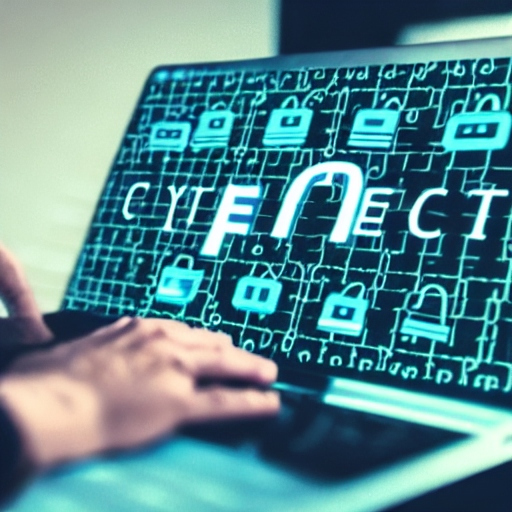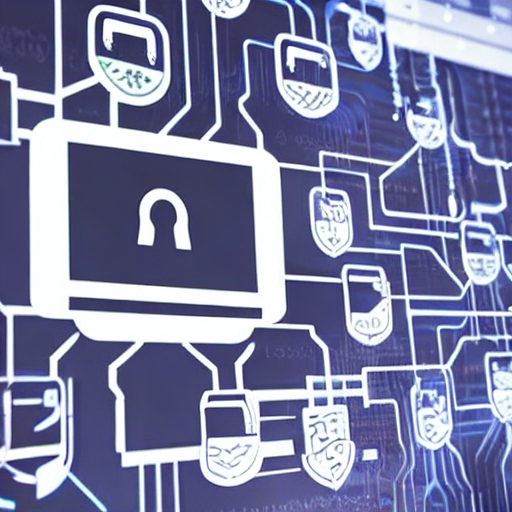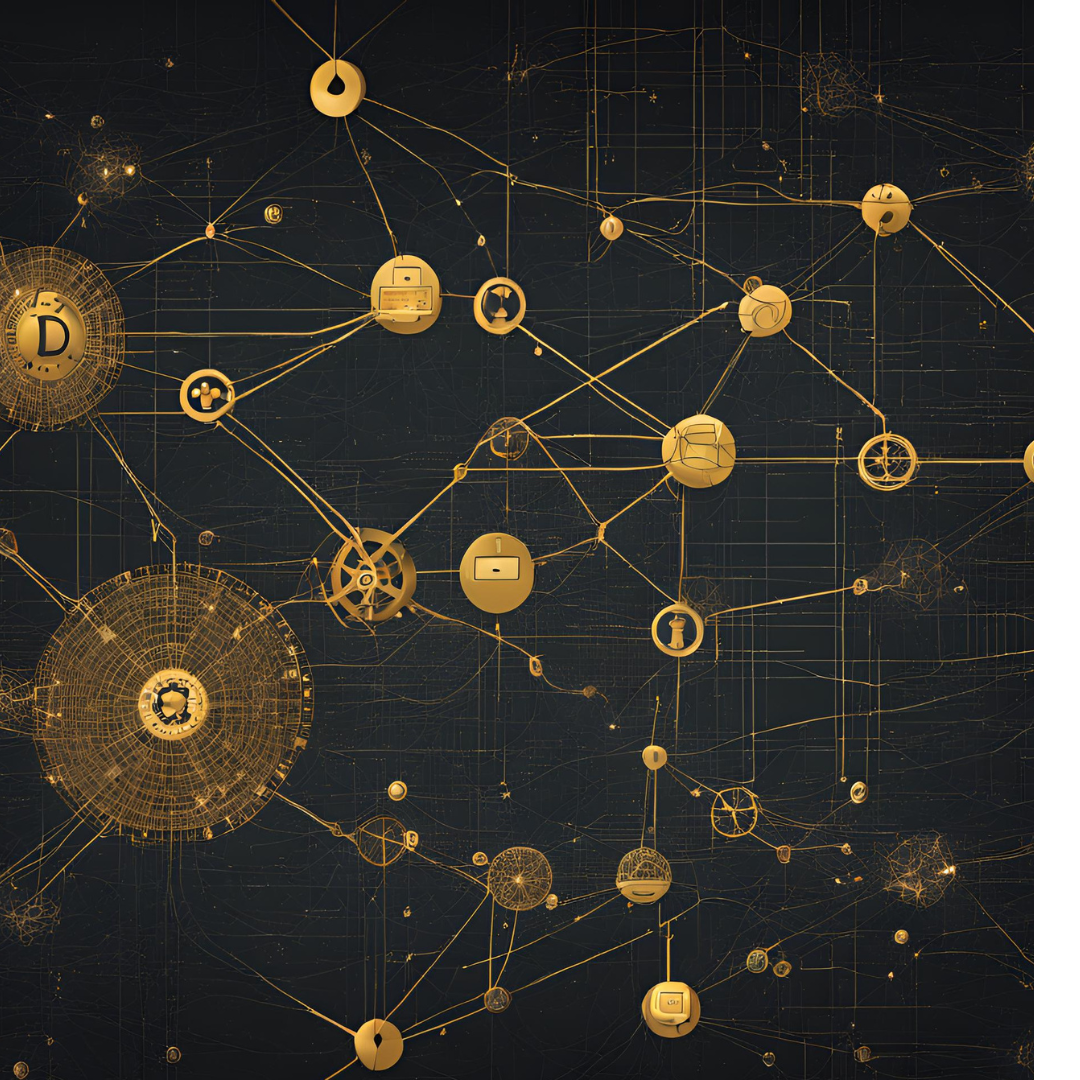In an era defined by digital innovation, the landscape of cybersecurity is in a perpetual state of flux. As technology advances, so do the methods employed by cybercriminals. Staying abreast of the latest trends in cybersecurity threats and prevention is crucial for individuals and organizations alike. In this blog post, we’ll explore some of the current trends in cyber threats and the proactive measures being taken to mitigate them.
1. Ransomware Resurgence: Ransomware attacks have experienced a resurgence, targeting not only large corporations but also small businesses and individuals. These attacks involve malicious software that encrypts data, rendering it inaccessible until a ransom is paid. Prevention strategies include regular data backups, employee training on phishing awareness, and the use of advanced endpoint protection tools.
2. Supply Chain Vulnerabilities: With interconnected global supply chains, cybercriminals are exploiting vulnerabilities in the supply chain to compromise multiple entities. This trend emphasizes the importance of robust cybersecurity measures throughout the entire supply chain, including third-party risk assessments, secure software development practices, and continuous monitoring.
3. Zero-Day Exploits: Cyber attackers are increasingly leveraging zero-day exploits, which target vulnerabilities unknown to software vendors. This emphasizes the need for proactive security measures such as regular software updates, vulnerability assessments, and the deployment of intrusion detection systems to detect and respond to unknown threats.
4. Cloud Security Challenges: As organizations transition to cloud-based infrastructures, the attack surface for cyber threats expands. Securing data stored in the cloud requires a multi-faceted approach, including strong authentication mechanisms, encryption, regular audits, and the use of cloud security services.
5. AI and Machine Learning in Cybersecurity: While AI and machine learning have been instrumental in enhancing cybersecurity, cybercriminals are also leveraging these technologies to enhance their attacks. This has led to the development of advanced threat detection systems that can autonomously identify and respond to evolving threats in real-time.
6. Phishing Attacks and Social Engineering: Phishing attacks remain a prevalent threat, with cybercriminals becoming increasingly sophisticated in their tactics. Combating these threats involves continuous user education, the implementation of email filtering solutions, and the use of multi-factor authentication to add an extra layer of security.
7. Regulatory Compliance: The regulatory landscape for cybersecurity is evolving, with stricter data protection regulations coming into effect. Adhering to these regulations not only helps organizations avoid legal consequences but also ensures a higher standard of cybersecurity hygiene.
8. Internet of Things (IoT) Vulnerabilities: The proliferation of IoT devices introduces new cybersecurity challenges. Many IoT devices have inherent security weaknesses, making them attractive targets for attackers. Implementing robust IoT security measures, such as device authentication, encryption, and regular firmware updates, is crucial to prevent unauthorized access and potential exploitation.
9. Advanced Persistent Threats (APTs): APTs are sophisticated, targeted cyber attacks that often involve prolonged and covert efforts. These threats are typically state-sponsored or conducted by well-funded organizations. Detecting APTs requires advanced threat intelligence, continuous monitoring, and a proactive incident response plan to minimize potential damage.
10. Biometric Security Concerns: Biometric authentication methods, such as fingerprint and facial recognition, are increasingly integrated into cybersecurity systems. However, concerns about the security of biometric data have risen. Protecting biometric information through strong encryption and adherence to privacy regulations is essential to prevent unauthorized access and identity theft.
11. Blockchain for Enhanced Security: Blockchain technology is gaining traction in cybersecurity for its ability to provide a decentralized and tamper-resistant ledger. It can be employed to enhance the security of transactions, identity verification, and data integrity. Integrating blockchain into cybersecurity strategies can add an extra layer of protection against data manipulation and unauthorized access.
12. Human-Centric Security: Recognizing that people are often the weakest link in cybersecurity, there is a growing emphasis on human-centric security. This approach involves not only technical solutions but also focuses on user behavior analysis, training programs, and fostering a security-aware culture within organizations.
13. Quantum Computing Threats: While quantum computing holds promise for solving complex problems, it also poses a threat to current cryptographic methods. The development of quantum-resistant encryption algorithms is underway to ensure that sensitive data remains secure even in the face of advancements in quantum computing.
14. Collaborative Cybersecurity Defense: Information sharing and collaboration among organizations and cybersecurity professionals are becoming increasingly vital. Threat intelligence sharing platforms and collaborative initiatives facilitate a faster response to emerging threats, allowing the cybersecurity community to collectively strengthen defenses.
15. Incident Response Planning: With the inevitability of cyber attacks, having a well-defined incident response plan is critical. This includes not only technical measures for isolating and mitigating threats but also legal and communication strategies to manage the aftermath of a security incident effectively.
16. Container Security: As containerization and microservices gain popularity in application development, securing containerized environments becomes crucial. Implementing container security measures, such as regular vulnerability scanning, image signing, and runtime security controls, helps prevent unauthorized access and data breaches within containerized applications.
17. 5G Network Security: The advent of 5G technology introduces new challenges in network security. With increased data speeds and connectivity, securing 5G networks involves encryption protocols, network slicing security, and protection against emerging threats targeting the expanded attack surface of these high-speed networks.
18. Cyber-Physical Attacks: Attacks on critical infrastructure, such as power grids, water supply systems, and transportation networks, pose significant risks. Cyber-physical attacks involve the manipulation of digital systems to impact the physical world. Strengthening the security of critical infrastructure requires a combination of cybersecurity measures and physical safeguards.
19. Automation in Security Operations: The use of automation and orchestration in cybersecurity operations is on the rise. Automated threat detection, response workflows, and security orchestration platforms help organizations efficiently manage and respond to security incidents, reducing the manual effort required and accelerating incident response times.
20. Cognitive Security: Cognitive security leverages artificial intelligence to enhance threat detection and response. Machine learning algorithms analyze vast amounts of data to identify patterns and anomalies, enabling cybersecurity systems to adapt to evolving threats. Integrating cognitive security into cybersecurity strategies enhances the ability to detect and mitigate sophisticated attacks.
21. Behavioral Analytics: Behavioral analytics focuses on monitoring and analyzing user behavior to identify unusual patterns that may indicate a security threat. By establishing a baseline of normal behavior, organizations can quickly detect deviations and potential insider threats, strengthening the overall security posture.
22. Cross-Sector Threat Intelligence Sharing: Collaboration between various sectors, including government, private industry, and academia, is essential for comprehensive threat intelligence sharing. Cross-sector collaboration enhances the collective ability to identify, understand, and mitigate threats that may target multiple industries simultaneously.
23. Extended Detection and Response (XDR): XDR integrates multiple security solutions into a unified platform, providing enhanced visibility and response capabilities. By consolidating data from various security tools, XDR facilitates more comprehensive threat detection and faster incident response, minimizing the impact of cyber attacks.
24. User Privilege Management: Limiting user privileges is a critical aspect of cybersecurity. Implementing the principle of least privilege ensures that users have the minimum level of access necessary for their roles, reducing the potential impact of a compromised account and limiting lateral movement by attackers.
25. Continual Employee Training: Cybersecurity awareness training for employees remains paramount. Regular training sessions on emerging threats, phishing simulations, and security best practices empower employees to recognize and respond effectively to potential security risks, contributing to the overall resilience of an organization.
26. Threat Hunting: Proactive threat hunting involves actively searching for signs of malicious activity within an organization’s network. This approach goes beyond traditional cybersecurity measures, with dedicated teams using advanced analytics and tools to identify potential threats that may have eluded automated detection systems.
27. Deception Technologies: Deception technologies involve the deployment of decoy systems and false information to mislead attackers and detect their presence. By creating a deceptive environment, organizations can identify malicious actors early in the attack lifecycle and gather valuable threat intelligence.
28. Mobile Security: With the increasing use of mobile devices for both personal and work-related tasks, mobile security is paramount. Implementing measures such as mobile device management (MDM), secure app development practices, and mobile threat defense helps protect sensitive data accessed and stored on mobile platforms.
29. Cybersecurity for Smart Cities: As cities become smarter with interconnected technologies, securing smart city infrastructure is critical. This includes securing IoT devices, implementing robust authentication for smart city services, and establishing comprehensive cybersecurity frameworks to safeguard against potential cyber threats.
30. Cyber Insurance: With the rising costs associated with cybersecurity incidents, organizations are turning to cyber insurance to mitigate financial risks. Cyber insurance policies can provide coverage for data breaches, ransomware attacks, and other cybersecurity incidents, incentivizing organizations to invest in robust cybersecurity measures.
31. Environmental, Social, and Governance (ESG) Factors in Cybersecurity: Investors and stakeholders are increasingly considering ESG factors, including cybersecurity practices, when evaluating organizations. Demonstrating a commitment to ethical cybersecurity practices not only enhances an organization’s reputation but also aligns with broader sustainability goals.
32. Quantified Security Metrics: Measuring the effectiveness of cybersecurity efforts requires quantifiable metrics. Organizations are adopting key performance indicators (KPIs) and metrics such as mean time to detect (MTTD) and mean time to respond (MTTR) to assess and improve their cybersecurity posture.
33. Cloud-Native Security: As cloud-native architectures become more prevalent, securing cloud environments is paramount. Cloud-native security involves implementing security measures that are specifically designed for cloud-based applications and infrastructure, including identity and access management, data encryption, and secure development practices.
34. Cybersecurity for Artificial Intelligence (AI): As AI technologies become integral to various industries, securing AI systems is essential. This involves ensuring the integrity and confidentiality of AI algorithms and models, protecting against adversarial attacks, and implementing ethical AI principles to address potential biases.
35. Diversity and Inclusion in Cybersecurity: Promoting diversity and inclusion in the cybersecurity workforce is not only an ethical imperative but also enhances the industry’s ability to tackle diverse and complex challenges. A diverse workforce brings a variety of perspectives, fostering innovation and creativity in cybersecurity strategies.
36. Third-Party Risk Management: As organizations rely on third-party vendors for various services, managing the associated cybersecurity risks is crucial. Establishing robust third-party risk management programs involves assessing the security practices of vendors, ensuring contractual agreements include cybersecurity requirements, and regularly auditing third-party security controls.
37. Dark Web Monitoring: Monitoring the dark web for potential threats and compromised credentials is an emerging practice. Cybersecurity teams leverage dark web intelligence services to identify if sensitive information, such as usernames and passwords, associated with their organization is being traded or sold illegally.
38. Cybersecurity Automation and Orchestration: The integration of automation and orchestration technologies streamlines repetitive cybersecurity tasks, allowing security teams to focus on more complex issues. Automated responses to common threats, coupled with orchestrated incident response workflows, enhance the efficiency and effectiveness of cybersecurity operations.
39. Immutable Security: The concept of immutable security involves designing systems and networks in a way that makes them unchangeable or “immutable” once deployed. This prevents unauthorized changes or tampering, reducing the risk of configuration errors or malicious alterations to critical infrastructure.
40. Open Source Security: The use of open source software is prevalent in many organizations, and ensuring the security of these components is vital. Implementing open source software security measures includes regular code audits, vulnerability scanning, and participation in open source security communities to stay informed about potential risks and patches.
41. Cybersecurity Awareness Training for Executives: Recognizing the role of executives in shaping an organization’s cybersecurity posture, specialized awareness training for leadership is essential. Executives should be well-versed in cybersecurity best practices, risk management, and the potential impact of their decisions on the organization’s overall security.
42. Emerging Threats from Quantum Computing: While quantum computing holds promise, it also poses unique threats to traditional cryptographic methods. Preparing for the era of quantum computing involves researching and adopting quantum-resistant cryptographic algorithms to safeguard sensitive information against potential future quantum attacks.
43. Behavioral Biometrics: Beyond traditional biometric methods, behavioral biometrics analyze patterns of human behavior, such as typing speed or mouse movements, for authentication. This dynamic approach enhances security by continuously validating the user’s identity based on their unique behavioral traits.
44. Cybersecurity for Remote Work: The shift towards remote work introduces new  challenges. Securing remote work environments involves implementing secure remote access solutions, enforcing endpoint security measures, and providing ongoing training to remote employees on cybersecurity best practices.
challenges. Securing remote work environments involves implementing secure remote access solutions, enforcing endpoint security measures, and providing ongoing training to remote employees on cybersecurity best practices.
45. Blockchain in Identity Management: Blockchain technology is being explored for enhancing identity management and authentication processes. Blockchain-based identity solutions offer decentralized and secure methods of managing digital identities, reducing the risk of identity theft and unauthorized access.
By incorporating these additional points into their cybersecurity strategies, individuals and organizations can stay ahead of the evolving threat landscape. From managing third-party risks to embracing emerging technologies, a holistic and adaptive approach is key to building resilience against the diverse and sophisticated challenges posed by cyber threats.





